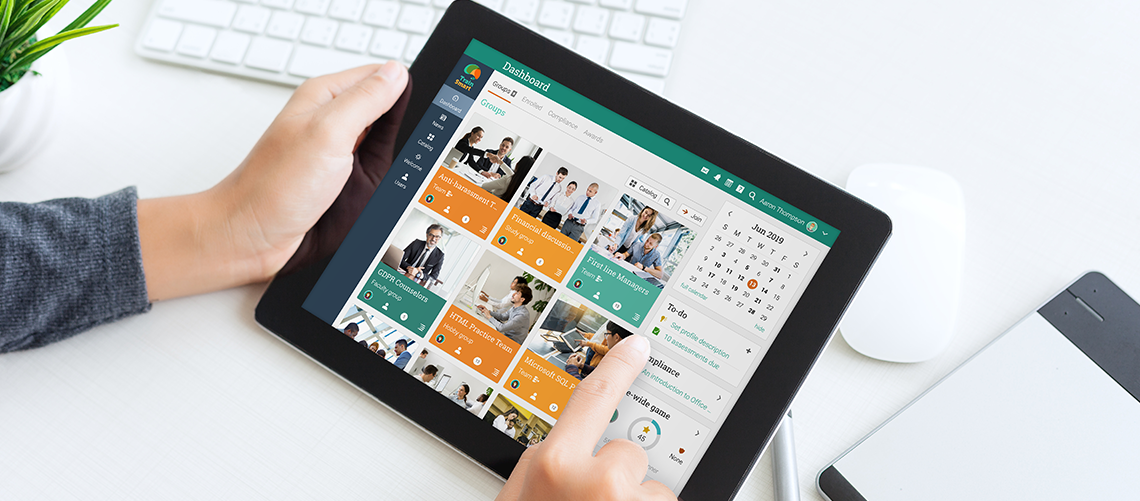By 2023, the LMS market is expected to cross the $22 billion mark. While that is great news for LMS vendors, it also means that there will be fierce competition between LMS vendors and developers to secure the most sizable chunk of the market.
As the industry becomes more competitive, many LMS developers are introducing flashy new features to their products in order to stand out from the crowd.
While this trend has introduced the e-learning industry with some truly beneficial features, there are others that add no value to the life of the end-user and make the LMS more complex to use.
LMS features that companies want
If you have been playing with new ideas for your business LMS and are unsure whether they will contribute to your success, this blog post will help clear the confusion.
Here are the most in-demand LMS features that companies look for:
Responsive design
Businesses across industries are realizing the importance of optimizing for mobile devices and the LMS industry is no exception.
A major percentage of modern learners are using mobile devices. As a result, responsive design has become a critical factor when a business owner is comparing the features of different LMS.
Optimizing for mobile devices is not enough, your LMS design and layout should offer a consistent and seamless experience to the learners, regardless of the device they are using. Hence, the emphasis on responsive designs that adjust the user interface depending on the device being used.
Read more: Why every LMS should have a responsive design
Blended learning support
Blended learning combines the best aspects of instructor-led training (ILT) and self-paced training.
It is a known (and effective) concept in the learning industry and blended learning features and support have become a standard inclusion in modern learning management systems.
A few common LMS features that support blended learning are:
Instructor-led training management
As the name suggests, this feature allows the instructor(s) of the course to manage their time and schedule classes, while letting the learners know about such updates.
For example, this feature would allow an instructor to schedule an in-person class at 2 PM tomorrow. They can set the maximum number of students that can sign up for the class, or invite specific learners for the session. The learners can find out about the session, and sign up to attend it through the LMS itself.
Virtual classroom
Once again, the name of the feature is pretty self-explanatory.
A virtual classroom is powered by an AV livestream from the instructor to the learners. This feature truly “blends” the real world with the virtual training environment, allowing instructors to deliver lessons, solve doubts, and answer questions, in real time, with students learning from remote locations.
Advanced virtual classrooms also offer common online whiteboard, class polling, and media streaming features.
Read more: How to organize online training for your remote employees and skyrocket their skills!
Freedom to customize
Be it an e-learning business or companies looking to deliver training to their employees, branding is an important goal for everyone.
An LMS, in most cases, makes up for an integral part of the company using it. Employees, stakeholders, and in many cases, customers will look at the course being delivered by your LMS.
For this reason, the level of freedom to customize the LMS has become an increasingly important consideration for businesses.
Does your LMS let your customers feature their logo in the courses? Are they free to use their own brand colors? Does your LMS help them deliver a unified experience that reinforces their brand recall value?
Moreover, customization is not limited to branding. While comparing vendors, a significant amount of consideration also goes into the extent to which the worksheets, course paths, delivery methods, and reports can be customized.
Robust reporting capabilities
Every business and individual that uses an LMS to deliver/obtain a course will want to track their progress.
Organisations want data about how their employees and instructors are interacting with their courses. Similarly, instructors expect data about their learners.
On the other hand, learners expect help with identifying areas that require improvement, along with information about their assessment results.
Many businesses also look for customization options for their reports. That way, information provided by the reports can be used to better align the LMS with the organisational needs.
Read more: Reporting on talent management
User friendliness
This may be the last point on this list but it is by no means any less important. Flashy features are of no use if the end user cannot take advantage of them.
In fact, a complex user interface is one of the most common challenges that businesses face with learning management systems.
Conclusion
Mentioned above, were some of the top considerations a business makes while choosing an LMS. However, there may be several other concerns that one might have regarding an LMS, depending on their unique needs.
For instance, many learning management systems come with integrated authoring tools. This might make life easier for some and save them the trouble of having to compare e-learning content providers. On the other hand, e-learning businesses may look for e-commerce integration to be able to sell their courses.







